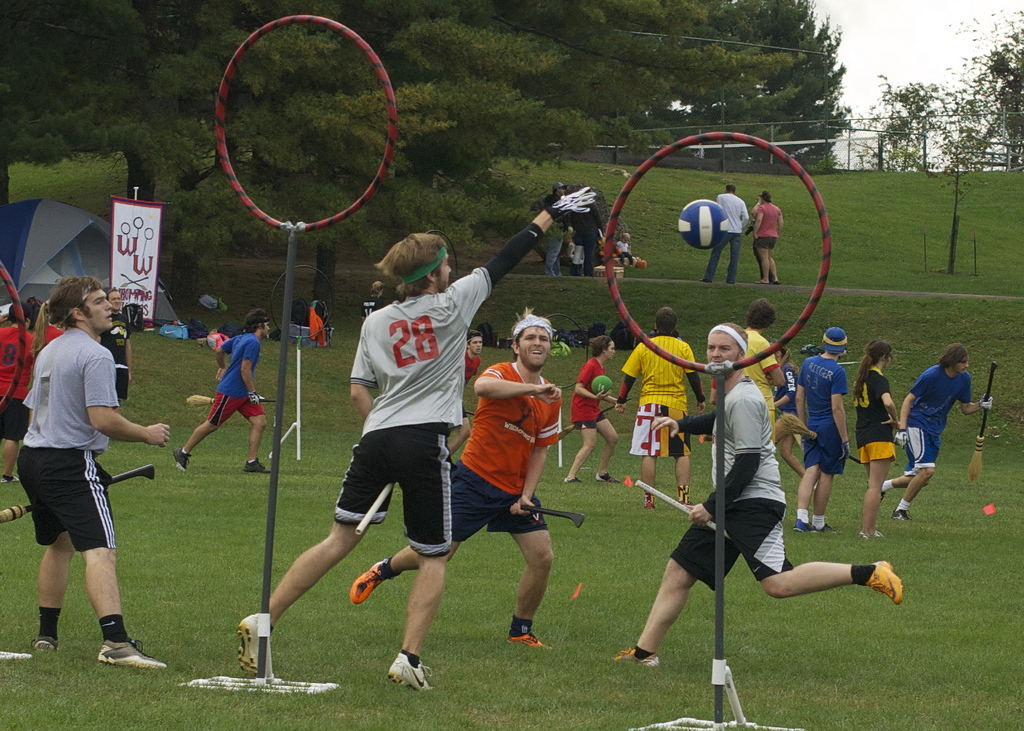- Rule, Britannia, no more?
- Unpopular Opinions: US Quadball Cup 2023
- Proven Contenders: University of Virginia
- Proven Contenders: Rutgers University
- Proven Contenders: University of Michigan
- Proven Contenders: Creighton University
- Different Perspectives: A Look Inside USA Ultimate
- Antwerp QC, Much of Belgian Core, Leaves Competitive Quidditch
Keeper: The Defensive Angle
- Updated: January 29, 2013

Most strategic discussion about the keeper position has been focused around its offensive implications within the game. After all, being heavily involved in the attack is what makes the keeper in quidditch so unique compared to keeper and goalie positions in other sports. But it’s unfair and wrong to look solely at keepers through such an offensive lens. The keeper, whether or not they should, bears the brunt of the responsibility for a team’s defense, and there is much improvement to be had in that facet of their game.
When discussing a keeper’s defensive responsibilities, it is best to look at the similarities between the position and other similar positions in other sports. In sports such as hockey and soccer, the position is focused almost entirely on defense, meaning that the defensive mindset, strategies, and techniques found there are tried and true and can be of great benefit to keepers in quidditch, who don’t devote as much of their time and energy to mastering defense.
Regardless of the experience level of the other players on the team, goalies in soccer always tend to be the de facto defensive captain. That’s simply a part of the position. The goalkeeper is responsible for positioning their defenders where they need them, adjusting defensive strategies, and being in control of the area around their goal.
If you’ve ever seen teams set up for a corner kick in soccer, you’ve probably noticed that the goalkeeper is pointing out specific spots and players that need to be marked, and is the one directly responsible for setting up the defense. As the one directly responsible for protecting the goal, it is the goalkeeper’s responsibility to continually make sure that their teammates are in the best possible position to prevent opposing teams from scoring.
This captainship of the defense is also an important part of being a defensively successful keeper in quidditch. The keeper has the best view of the action, and is thus in the best position to make decisions to react to what opposing offenses are doing.
Keeper is not a passive position. As a keeper, your team’s half of the pitch is your domain. You are in charge there, regardless of your experience level. This doesn’t mean that you should ignore your captains or your general team strategy, or try to impose your own personal strategies. It just means that you need to be constantly aware of what is going on in your half of the pitch, and make adjustments in the defense as needed.
This leadership also necessitates being vocal and confident. A good keeper must be excellent at communicating with their teammates during play. It can seem daunting to have to take charge especially if you worry about seeming overbearing or bossy. But the single worst thing you can do as a keeper is to be timid and quiet. Those hoops are like your home, and the keeper must be proactive about protecting their hoops, which means being vocal.
Switching sports once again, we can learn different lessons from hockey, where the goalie position is all about playing the angles. Because the puck will often travel towards them at over 100 miles per hour, as soon as a shot is taken, the goalie must figure out its trajectory and position themselves accordingly. The goalie moves in a somewhat elliptical motion in front of their goal line, constantly attempting to get the best angle to cut off incoming shots.
This focus on angles also comes in useful in quidditch. The hoops are a large area to cover, especially when players can wrap around and score from the back. There is no way that the keeper can cover all of that area by themselves. Because of this, they must have their defense positioned in such a way that they force opposing players to take difficult shots that have a low probability of being successful. If an offensive player has the quaffle on the left side of the pitch, the keeper needs to position the whole defense in a way that forces them to either shoot straight at the keeper or across the pitch at the far hoop, both of which have a low probability of being successful shots. By manipulating angles, a keeper can force opposing offenses to take less-than-ideal shots.
We can also take hockey’s concept of a constantly shifting goalie and apply it to quidditch. New keepers often position themselves directly under their middle hoop. But this drastically affects their ability to play the angles. By moving out five to ten feet in front of the hoops, the keeper has a much wider sphere of coverage for both passes and shots, and can also adjust to a moving offensive player more easily.
The best defensive keepers are those who take pride in their defense. Players who simply view the keeper as a fourth chaser often struggle to stop opposing teams from scoring, as they neglect to do the simple things that make for a good defense. Devote energy to developing and honing your defensive abilities, and you’ll be able to double your impact on the game.

2 Comments